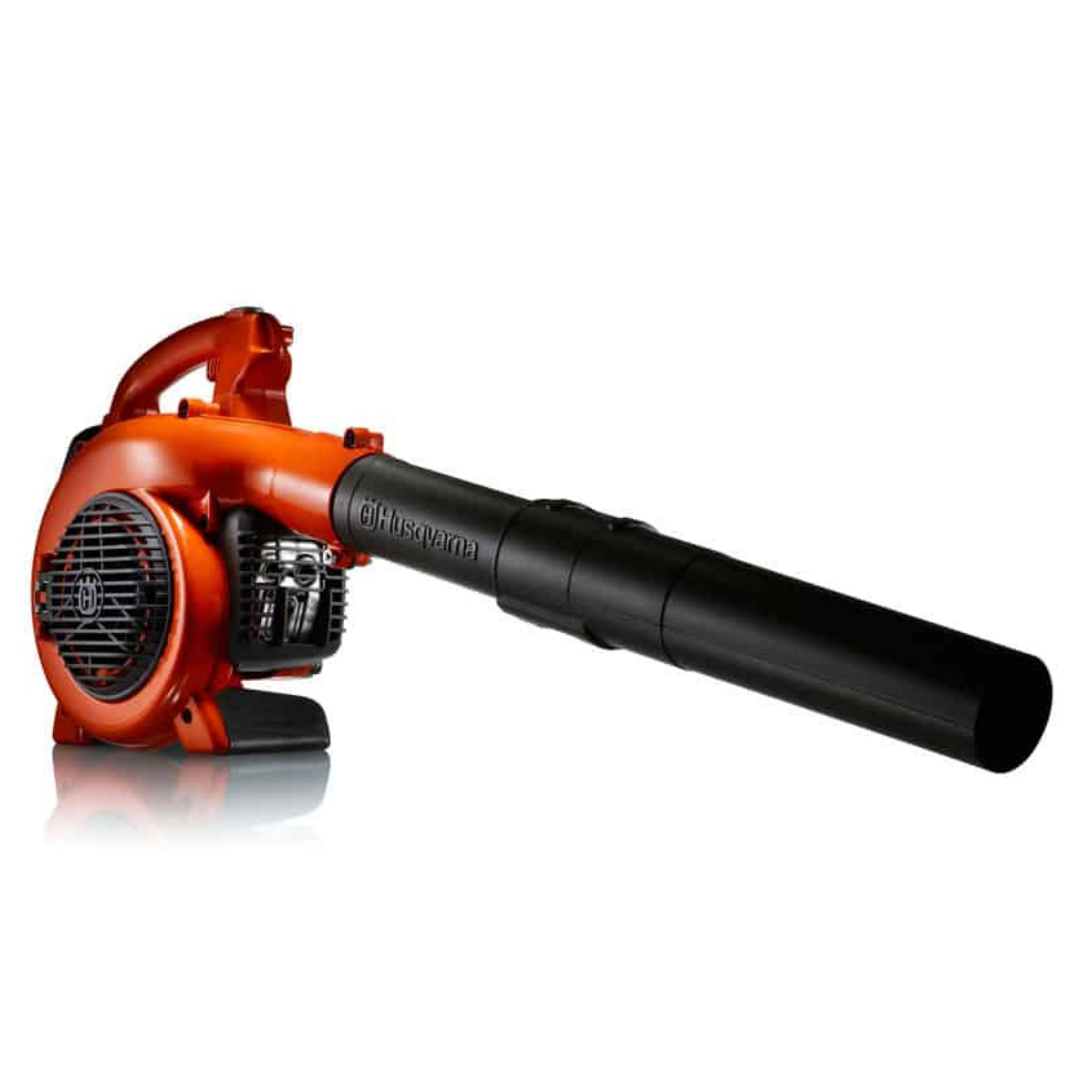Last Updated on April 12, 2024 by Real Men Sow
A leaf blower is a great friend for gardeners in autumn. It’s a quick and easy way to move and collect leaves and other garden debris as the weather turns colder. To get the best out of your leaf blower this autumn, you must first understand how it works.
If you had trouble setting your leaf blower, we wrote a quick leaf blower fix article too.
How Do Leaf Blowers Work?
Leaf Blower Air Flow Principles
Leaf blowers use centrifugal force. This is an outward force that rotates in a reference frame. The motor is housed in the inner casing. There are also many blades, which is often called an impeller. The leaf blower‘s The fan blades will spin the air from the outside. The centrifugal forces of the blower tube are used to spin the air and that creates pressure in the casing, which causes the air to shoot out of the blower tube with a high speed.
Leaf Blower Air Speed
The power output of the motor and propulsion system will determine the overall airspeed, which can be measured in two ways. Miles per hour (MPH), which is the most common measurement, is simply how far the air travels in an hour if velocity was constant. Manufacturers may also use meters per second, or M/S, to measure similar distance-to time. A general rule of thumb is that 1 m/s equals 2.24 mph. For example, a blower with a power 55 m/s such as the Flymo Scirocco 3000 this equates roughly to 123 mph.
As a second power measurement, cubic feet per minute (CFM), refers to the air velocity through the pipes. A high MPH, but a small volume of fluid won’t allow you to move many leaves. When looking for a leaf blower, you should consider these numbers. The higher the CFM, the more air the leaf blower is producing. This can be combined with a high MPH and M/S to ensure that the power output is strong enough for even the most stubborn leaves.
Power
Cylinder displacement (CC), is another way to describe the total power of petrol leaf blowers. The machine’s ability to shift the leaves quickly and efficiently. The cylinder displacement is a measure of how powerful the leaf blower is. A lower cylinder displacement means that they use more energy. You need to find the right balance between power output and energy. The energy output of electric leaf blowers is reported in watts.
All leaf blowers work on the same principle: harnessing the centrifugal force, regardless of their power source. However, petrol machines are more popular because they spin the motor at a faster speed. Although they are less powerful than petrol blowers, electric or battery blowers are much lighter and more efficient than their petrol counterparts. This would work well in a small garden with few trees. The average household can also have electricity much faster than petrol, so you don’t need to store the petrol or oil needed for petrol blowers.
Collection Vs. Mulch
Some leaf blowers include a vacuum setting. Vacuums work the same as blowers in that the airflow is spun in the exact same manner. However, it is directed to the bag instead. Some exceptions include the Flymo FlowerVac 2700 which has a plastic strip at its bottom that directs the airflow. This allows you to collect the leaves in the attached bag and suck them up.
Many garden vacuums have leaf shredding features that allow the machine to cut/shred leaves as it collects them. Each method of collection has its pros and cons. It is up to the gardener and individual to decide which one is best. You can limit the uses of leaves depending on how big they are shrunk into. Make sure you check the mulching or shredding ratio. Flymo Scirocco, for example, reduces the size by 10 times. This allows you to collect 10 bags of leaves from one go.
Vacuum Fan Types
There are two types of garden vacuums on the market today. These are the “Clean Fan”, and “Dirty Fan”. Each has its own advantages and disadvantages, and is very well suited for different types of gardens.
The dirty fan is different as it is the impeller or fan that cuts the leaves before putting it in the bag. The fan is less complicated, but there’s a greater chance of it being damaged. This is especially true when leaves are collected near stones or other hard objects. The dirt fan will however provide a higher mulching rate. The leaves are shredded into smaller pieces than a clean fan would.
Both vacuums need to be cleaned frequently in order to keep them in good condition. To keep your vacuum running at its best, clean out all debris from the collection and fans as well as the air inlets. The clean fan system uses shredding lines to remove leaves. It also provides greater protection for the fan/impeller if you accidentally suck up any hard objects.
How Do Leaf Blower Bags Work?
Vacuum Bag Capacities
Many blower vacuums include a collection bag. Because of the various fan types, it is important to choose the right vacuum for your garden. The bag size is also important. The Flymo PowerVac3000 blow vacuums can shred leaves to a smaller size (16:1 ratio), so you can collect more leaves without having to empty the bag. You can then use the leaves to make your compost pile!
Regular emptying of clean fans that don’t break down leaves into smaller pieces will be more difficult. This will depend on the size of your garden and how many leaves are being moved. It all depends on how much land you wish to clear. Another thing to consider is the vacuum’s weight. As the bag fills up, it will become heavier. Scirocco 3000 comes with a wheel that makes it easier to maneuver around your garden.

